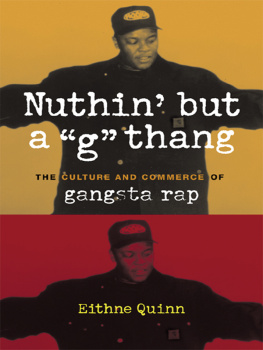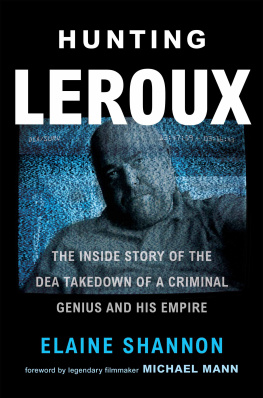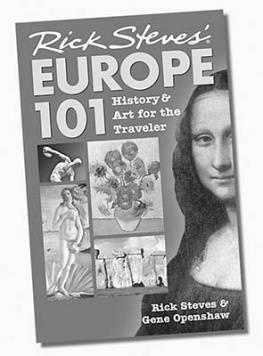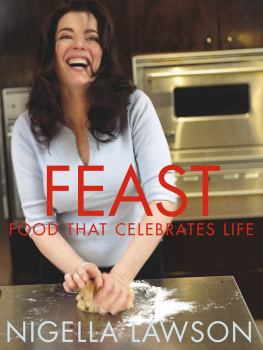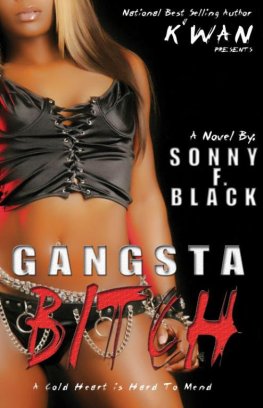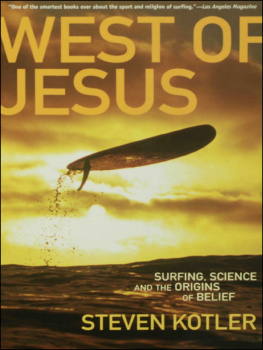Nuthin but a G Thang
POPULAR CULTURES, EVERYDAY LIVES
POPULAR CULTURES, EVERYDAY LIVES
Robin D. G. Kelley and Janice Radway, Editors
Interzones: Black/White Sex Districts in Chicago and New York in the Early Twentieth Century
KEVIN J. MUMFORD
City Reading: Written Words and Public Spaces in Antebellum New York
DAVID M. HENKIN
Selling Suffrage: Consumer Culture and Votes for Women
MARGARET FINNEGAN
Ladies of Labor, Girls of Adventure: Working Women, Popular Culture, and Labor Politics at the Turn of the Century
NAN ENSTAD
Telling Bodies, Performing Birth: Everyday Narratives of Childbirth
DELLA POLLOCK
From Bomba to Hip-Hop: Puerto Rican Culture and Latino Identity
JUAN FLORES
Taking the Train: How Graffiti Art Became an Urban Crisis in New York City
JOE AUSTIN
Shaky Ground: The Sixties and Its Aftershocks
ALICE ECHOLS
A Token of My Affection: Greeting Cards and American Business Culture
BARRY SHANK
Raising Consumers: Children and the American Mass Market in the Early Twentieth Century
LISA JACOBSON

COLUMBIA UNIVERSITY PRESS
Publishers Since 1893
New York Chichester, West Sussex
cup.columbia.edu
Copyright 2005 Columbia University Press
All rights reserved
E-ISBN 978-0-231-51810-9
Library of Congress Cataloging-in-Publication Data
Quinn, Eithne, 1971
Nuthin but a G thang : the culture and commerce of gangsta rap / Eithne Quinn.
p. cm. (Popular cultures, everyday lives)
Includes bibliographical references (p. ) and index.
ISBN 0231124082 (cloth : alk. paper) 0231124090 (pbk. : alk. paper)
1. Rap (Music) History and criticism. I. Title: Nothing but a G thing. II. Title. III. Series.
ML3531.Q56 2004
782.421649dc22
2004049384
A Columbia University Press E-book.
CUP would be pleased to hear about your reading experience with this e-book at .
 | TO PETER KRMER |
I AM EXTREMELY grateful to many people for their advice, feedback, and support in the development of this project, from its inception during my doctoral studies through to the completion of the book. By far the biggest debt I owe is to Peter Krmer, whose intellectual scope and acuity permeate the pages below. The day that Peter first offered to read a draft chapter of my doctoral work at Keele University was my luckiest, for since then he has expertly and meticulously guided this project while schooling me in all aspects of my fledgling academic career. I cannot imagine a better mentor and friend, and therefore I dedicate this book to you, Peter.
Thanks to Ann Miller, Anne Routon, and Michael Haskell at Columbia University Press for their professionalism and interest in this project. I would also like to thank Gregory McNamee, who edited this manuscript promptly and precisely. Thanks to Amma Donkor, Rachael Johnson, David Sanjek, and Matt Smith for making the hunt for lyric reprint permissions less painful. I would like to acknowledge the support of the Arts and Humanities Research Board, which awarded me two grants to conduct research and prepare this manuscript for publication. I would also like to thank the British Academy, the Bruce Centre for American Studies at Keele University, and the British Association for American Studies for funding research and conference trips. Special thanks go to the Department of Cultural Studies at the University of Central Lancashire, which generously supported my research with an early sabbatical. Thanks also to Leeds Education Authority for funding my first degree in American Studies.
I am very grateful to those colleagues, peers, friends, and editors who have helped this project in a variety of ways. Among the many people who aided and abetted my research trips, big thanks to Brian Cross, Steven Daly (the nexistential man), Suzanne Flandreau (at the Center for Black Music Research), Michael Langnas, George Pitts (at VIBE), Todd Roberts, Jill Solomon, and finally to Chuck Philips at the Los Angeles Times for expertly explaining the business operations of gangsta rap. For advice, criticism, and encouragement on manuscripts, I am deeply grateful to James Annesley, Davarian Baldwin, Shawn Belschwender, Steve Chibnall, Kieron Corliss, Gary Cross (thanks for your timely help with the book proposal), Paul Grainge, Lee Grieveson, David Horn, Peter Knight, Peter Ling, Sarah MacLachlan, George McKay, Jonathan Munby, Steve Neale, Julian Stringer, William Van Deburg, and Michele Wright. Grateful thanks to Mary Ellison (with deep affection), Tim Lustig, and Brian Ward for their patience and professionalism in the examining of my Ph.D. thesis. I learned a lot from you all. I owe a special debt to three people: Mark Jancovich, who first encouraged me to continue my studies in rap music and has remained a loyal mentor, Craig Watkins, who has influenced my intellectual development in profoundly positive ways, and Robin Kelley, from whose enormous generosity I have happily benefited. I also thank Robin for his peerless writing and ideasboth intellectual and politicalwhich have sustained this project (and me) as they have so many others in the field.
I have learned a great deal from my students, especially in African American culture classes at the University at Nottingham and the University of Manchester. Thank you all. Friends, many named above, have contributed to the completion of this project in rich ways. Thank you especially to music lovers Sue Attwood, Howard Davies, Percy Gibbons, the Gutch family, Fiona Henshaw, Lorraine Mahoney, Jill Solomon (again!), Phil South, Rachel Thornton, Iain Williams, David Yelland, and above all Frankie Chapman, who taught me the most about music and soul. I feel enormously privileged to have encountered so many great people during my studies of gangsta rapthose named here, and many more.
Finally, this book would not have been written without the support of my wonderful family, the Quinns. To name only the most immediate: Eugene (the proofreading don), Jeremiah, Roisin, Rory, Trisha, Mary Curtis, my dear mum Noirin, and my dear dad Victor, who isnt here to see this book, but whose influence and faith underpin it. And deep appreciation to the newest appendage to my family: Steven Jones, for love, conversation, and much else.
A Bird In The Hand. Words and Music by Ice Cube and Mark Jordan. 1993 Gangsta Boogie Music and Street Knowledge Music, USA (50 percent). Warner/Chappell North America Ltd., London W6 8BS. Lyrics reproduced by permission of IMP Ltd. All rights reserved.
A Bird In the Hand. Oshea Jackson/Mark Jordan/George Clinton Jr./ Ronald Dunbar/ Donnie Sterling/Garry M. Shider/William Earl Collins. Bridgeport Music Inc. (BMI). All rights reserved. Used by permission.
A Bird In the Hand. Written by Mark Jordan, published by Published By Patrick.
I Love Ladies. Words and music by Tracy Marrow and Afrika Islam. 1987 Colgems-EMI Music Inc. and Rhyme Syndicate Music, USA (25 percent), Screen GemsEMI Music Ltd., London WC2H 0QY. Reproduced by permission of International Music Publications Ltd. All rights reserved.
I Love Ladies. Words and music by T. Marrow, Afrika I. 1991 Rubberband Music, Inc./Universal Music Publishing Limited (75 percent), 77 Fulham Palace Road, London. Used by permission of Music Sales Limited. All rights reserved.
Im A Player. Words and music by T Shaw, G. Clinton, W. Collins, W. Frank. Copyright 1991 Rubberband Music, Inc./Universal Music Publishing Ltd. (30 percent), 77 Fulham Palace Road, London. Used by permission of Music Sales Limited. All rights reserved. International copyright secured.
Next page
